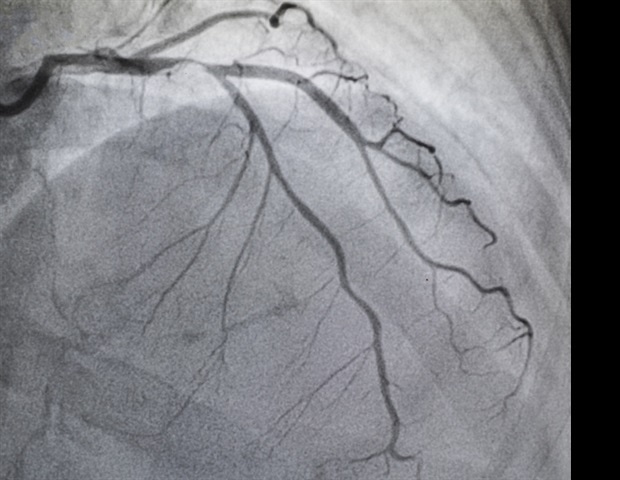_on_the_monitor_in_the_oper_-_sfam_photo_M1_4c305952fa024a66ba7d0dc6e2321d48-620x480.jpg)
Results from the Evolut FX TAVR (Transcatheter Aortic Valve Replacement) Clinical Survey were presented today as late-breaking clinical research at the Society for Cardiovascular Angiography & Interventions (SCAI) 2023 Scientific Sessions. The survey, comprised of feedback from physicians across the United States, reported improved deliverability, tracking, and deployment of the next-generation device compared to its predecessor.
Aortic stenosis (AS), is one of the most common valvular heart diseases and can potentially lead to heart failure. Once symptoms of AS begin, average patient survival can be as short as two years without treatment. TAVR is a minimally invasive procedure to treat patients with symptomatic severe AS that has been shown to improve patient survival.
Physician feedback on the next-generation Evolut FX TAVR system (Medtronic) was obtained from June 24-September 11, 2022, at 69 U.S. centers from 539 physician administered surveys (or from 539 Evolut FX implants) with a broad range of implant experience and volume. Survey results compared Evolut FX to physicians earlier experiences with Evolut PRO+ system using descriptive statistics.
Commissural alignment during TAVR procedures is key to improving coronary access, blood flow and valve performance. These real-world physician insights underscore the procedural benefits of improved deliverability with a more predictable deployment.”
Tanvir Bajwa, MD, FACC, FSCAI and interventional cardiologist and medical director of the Structural Heart Program at Aurora St. Luke’s Medical Center and Aurora Medical Center-Oshkosh, in Milwaukee, Wis., and lead author of the analysis
Evolut FX valves (23 mm, 7%; 26 mm, 30%; 29 mm, 45%; 34 mm, 19%) were implanted via transfemoral (TF) access in 97% of cases. The cusp-overlap technique (COT) was used in 89% (457/516) of cases. Commissural alignment was achieved in 96% (447/465) of TF cases using the cusp overlap view. During initial deployment, no noticeable ventricular movement of the Evolut FX device was reported in 79% (398/506) of cases and 79% (413/526) of operators rated the FX as having a more predictable deployment.
The authors note they intend to study how the device enhancements impact patient outcomes in future clinical trials.

